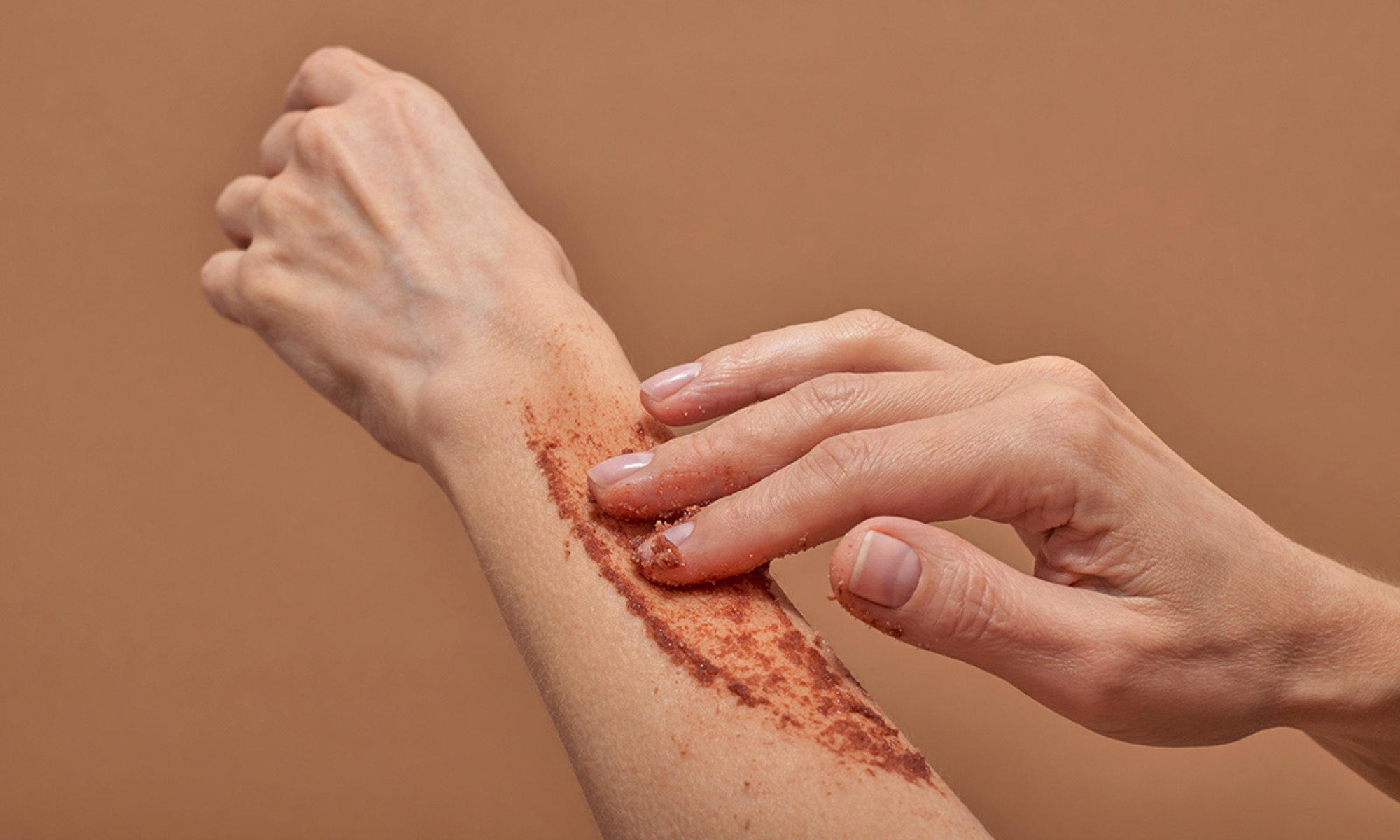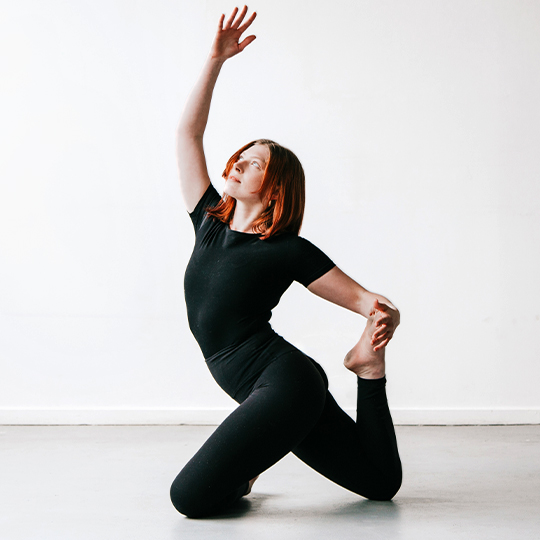Your Skin Barrier Is Begging You To Stop Overusing These Products
Please, your skin barrier is begging you to chill out on exfoliation products.


Senior Beauty & Lifestyle Director
Senior Beauty & Lifestyle Director
Alexandra Engler is the senior beauty and lifestyle director at mindbodygreen and host of the beauty podcast Clean Beauty School. Previously, she's held beauty roles at Harper's Bazaar, Marie Claire, SELF, and Cosmopolitan; her byline has appeared in Esquire, Sports Illustrated, and Allure.com.
Image by Viktor Solomin / Stocksy October 09, 2024 We carefully vet all products and services featured on mindbodygreen using our Our selections are never influenced by the commissions earned from our links. Every so often I see an emerging beauty trend—one that gives me pause—and think to myself, Haven’t we already learned this lesson? Did we all undergo collective amnesia? For example: Just about any brow trend. As most ‘90s kids can warn you, dramatically altering your brows for the sake of aesthetics will only leave you wanting when the inevitable pendulum swings back around. I’m currently seeing this with barrier repair. Over the last several years, the beauty industry has solved for a lot of exfoliation wrongs. After about a decade of blasting the epidermis with the most potent actives skin care topicals could tolerate, folks started to wise up that they’ve been wreaking havoc on the skin barrier. So the industry saw a huge shift towards restoration products: The market was flooded with creams and serums that built up the skin with peptides, ceramides, and fatty acids. This, I might add, was a positive shift. But apparently that enthusiasm for exfoliation had to be directed somewhere! Just when I thought we had learned our lesson about burdening our epidermis with abrasive products, I started seeing countless body products with AHAs, BHAs, retinols, and more. Over the last few years, there’s been a consistent uptick of Google searches for categories like “retinol body lotion,” “exfoliating body wash,” and “body serum.” Clearly, the public has an interest in these products. So now the question becomes how does one use them responsibly, without making the same barrier-busting mistakes we made on the face? Well, don’t worry I’m here to talk about it. 
What to know about using potent body products.
I want to start out with the caveat that I don’t think these products are bad (in the same way I don’t think facial retinol serums are an issue). In fact, these ingredients can do wonders for the appearance of the skin: BHAs can help improve acne, retinols can boost collagen production, and AHAs can help brighten tone and fade dark spots. All things I can get behind.
However, I become weary when these powerful actives aren’t paired with the right recovery products—or that people aren’t being mindful of the ways in which they’re using them. Just like I would never encourage someone to use a BHA cleanser, followed by a retinol serum, and wrapped up with an AHA cream all in one go—folks need to pare back their body care routines before they trigger damage.
My TikTok feed is inundated with folk’s “getting ready for summer” routines that contain multiple exfoliating steps. These are routines that are ripe for irritation and barrier impairment, leading to damaged and sensitized skin.
See, acting as a barrier is your skin’s most important function. "It protects us from mechanical injury, low humidity, cold, heat, sun, wind, chemical exposure, bacteria, viruses, fungi, and other pathogens," explains board-certified dermatologist Hadley King, M.D., stating that, "a healthy barrier is critical to normal skin function."
When we get in the way of that function, our skin won’t be able to keep water trapped in, protect us from free radical damage, and may even lead to chronic skin diseases like eczema.
It’s not just the mechanical and physiological concerns to worry about: Long-term, chronic inflammation from a weakened skin barrier can lead to signs of premature aging over time. It’s a concept called inflammaging, and it affects your body just as it can affect your face. Inflammaging on the body may look like dark spots, loss of elasticity, fine lines, and crepines—yes, in the hopes of solving a skin concern, you can make it worse by overdoing it.
How to use body treatments and protect your barrier
You do not need to swear off these products. I have a go-to treatment or two, and you can too! However, I strongly encourage folks to be mindful about what they’re using, how they’re folding it in their routine, and to pay attention to any signs of irritation.
Here are some quick tips for exfoliating your body without damaging your barrier. If these tips sound familiar—yes, the tips are shockingly similar to advice I give for treating the face. Skin is skin, after all.
Find your exfoliation sweet spot
Every skin type has different tolerances for these sorts of ingredients—for example, someone with oily skin will be able to use AHAs far more frequently than someone with dry skin.
"The most important tip is that 'less is more.' You want to exfoliate just enough to increase cell turnover and reveal fresh new skin, but be sure to not scratch or damage your skin by overusing these devices or products." said Ife Rodney, M.D., a board-certified dermatologist and founder of Eternal Dermatology on the subject.
"Most people can get away with twice or even thrice-weekly exfoliation. Those with more mature, dry, or sensitive skin, may only want to exfoliate weekly."
But unfortunately, there’s no secret algorithm I can share here that will help you identify your exact frequency. And even if I could, it’ll likely change depending on the time of year, the product itself, and how your skin is feeling at a given moment. The best I can give is a range, but ultimately it’s about listening to your skin.
Always utilize barrier supporting products alongside treatments
If you opt for a retinol lotion, body serum, exfoliating wash, or any product of the like, you should get yourself a barrier repair product alongside it. Look for lotions or creams that contain barrier-enhancing ingredients, such as lipides, peptides, humectants, fatty acids, ceramides, antioxidants, and biotic ingredients.
These can help fortify and strengthen the skin—helping mend any potential damage that may have come from too aggressive exfoliation.
For example, mindbodygreen’s postbiotic body lotion utilizes a robust assortment of ingredients that target every aspect of the skin barrier. It contains butters and oils rich in lipids and fatty acids, extracts that have been shown to boost ceramide levels in the skin (such as shea butter and oat oil), humectants like glycerin and aloe vera to hydrate, antioxidants to neutralize free radicals, and biotech postbiotics to nurture the skin microbiome.
Stick to one treatment at a time
You don’t need all of the products all at once. I know it’s tempting to try all the buzzy, new formulas out there, but before you go haywire trying every firming treatment under the sun your best bet is to stick to one new product at a time.
"Stop buying products just because people influence you or because it's a trendy product to try. Not all ingredients are meant for every person," says celebrity aesthetician Joanna Vargas. "If you go into the store because you read about something and you buy that thing, and if you do that one time a month, you wind up with like 80 products but never really sorting out what you should use."
Take recovery days
Think of it like “skin cycling” for below the neck. Skin cycling is a skin care philosophy coined by mindbodygreen collective member and board-certified dermatologist Whitney Bowe, M.D.
In skin cycling, you fluctuate what treatment step you use each night—starting with an exfoliator, then a retinol, followed by several recovery days. It was developed for treating skin on the face, but certainly can be used for body routines as well.
The skin needs recovery days just like the body does. We can’t overload it with actives and expect it to function optimally twenty-four-seven. In the same way you can’t expect the body to perform after attending a HIIT class seven days a week. The skin, like the body, needs a break.
The takeaway
The skin barrier function may be top of mind for the face, but it seems we haven’t yet taken the hard-earned lesson south of the jawline. When there are so many treatment products out there—loaded with retinols, AHAs, and BHAs—it’s easy to get a little overzealous. But in the pursuit for firm, smooth skin, it’s quite possible we’ll damage our precious barrier instead. Be sure to use these products in moderation, and opt for barrier supporting formulas on your recovery days.

 Fransebas
Fransebas -v1646695196476.jpg?1148x800)
































